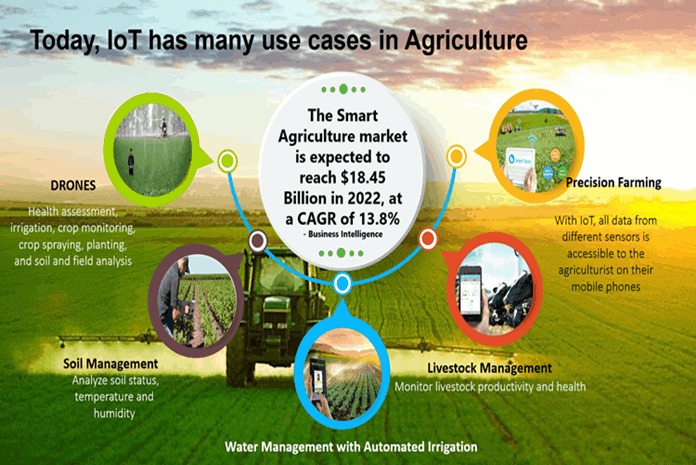Introduction
Agriculture is the backbone of our civilization, providing food, fiber, and fuel to sustain our growing population. However, the challenges facing modern agriculture are manifold. From climate change to the depletion of natural resources, farmers are constantly seeking innovative solutions to maximize yield while minimizing environmental impact. Enter IoT (Internet of Things) sensors, a game-changing technology that is transforming farming into a highly precise, data-driven endeavor.
What Are IoT Sensors?
IoT sensors, also known as smart sensors, are devices equipped with various sensors and communication capabilities, allowing them to collect and transmit data to a central system or the cloud. These sensors can monitor a wide range of parameters, including temperature, humidity, soil moisture, light levels, and more. In agriculture, they are strategically deployed across farms to gather real-time data, enabling farmers to make informed decisions and optimize their operations.
Applications of IoT Sensors in Agriculture
Precision Agriculture: Precision agriculture is all about maximizing crop yield while minimizing input resources such as water, fertilizer, and pesticides. IoT sensors play a crucial role in achieving this by providing granular data on soil conditions, crop health, and weather patterns. Farmers can use this information to tailor their farming practices to specific areas of their fields, reducing waste and increasing efficiency.
Livestock Monitoring: IoT sensors are not limited to crop farming. They are also used in livestock management. These sensors can monitor the health, behavior, and location of animals, allowing farmers to detect illnesses early and optimize feeding and breeding practices.
Environmental Monitoring: Agriculture has a significant impact on the environment. IoT sensors can monitor environmental parameters such as air and water quality, helping farmers reduce pollution and minimize their ecological footprint.
Supply Chain Management: IoT sensors can be used to monitor the conditions of crops during transportation and storage. This ensures that produce reaches consumers in optimal condition, reducing food waste.
Benefits of IoT Sensors in Agriculture
The adoption of IoT sensors in agriculture brings forth a multitude of benefits:
Data-Driven Decision Making: With real-time data at their fingertips, farmers can make informed decisions about irrigation, fertilization, and pest control. This leads to resource optimization and higher yields.
Reduced Environmental Impact: Precision agriculture enabled by IoT sensors allows for the judicious use of resources, reducing the environmental impact of farming practices.
Cost Savings: By optimizing resource usage and reducing waste, IoT sensors can lead to significant cost savings for farmers.
Improved Crop Quality: Monitoring environmental conditions can result in better crop quality and consistency, meeting market demands.
Enhanced Food Safety: IoT sensors in the supply chain can help identify and address issues that could compromise food safety, such as temperature fluctuations or humidity levels.
Challenges and Considerations
While IoT sensors offer tremendous potential in agriculture, their adoption is not without challenges. Some of the key considerations include:
Data Security: The vast amount of data generated by IoT sensors must be securely stored and transmitted to prevent unauthorized access and potential breaches.
Infrastructure and Connectivity: Rural areas may lack the necessary infrastructure and connectivity for IoT sensor deployment. Addressing this issue is essential for widespread adoption.
Integration: Integrating IoT sensor data into existing farm management systems can be complex. Farmers may require training and support to make the most of this technology.
Cost: The initial investment in IoT sensor deployment can be a barrier for smaller farms. However, the long-term benefits often outweigh the costs.
The Future of Farming Automation with IoT Sensors
As technology continues to advance, the role of IoT sensors in agriculture is only expected to grow. Future developments may include more advanced sensors capable of detecting a broader range of parameters, improved connectivity solutions, and even greater automation through the use of robotics and AI.
In conclusion, IoT sensors are revolutionizing farming by providing real-time data that empowers farmers to make smarter decisions, reduce waste, and increase productivity. As the agriculture industry faces the challenges of the 21st century, these sensors offer a ray of hope, enabling us to feed a growing global population while preserving our planet’s resources.
The adoption of IoT sensors is not just a trend but a necessity for sustainable and efficient farming. Whether you’re a large-scale commercial farmer or a smallholder, embracing this technology can lead to a brighter and more prosperous future for agriculture.





